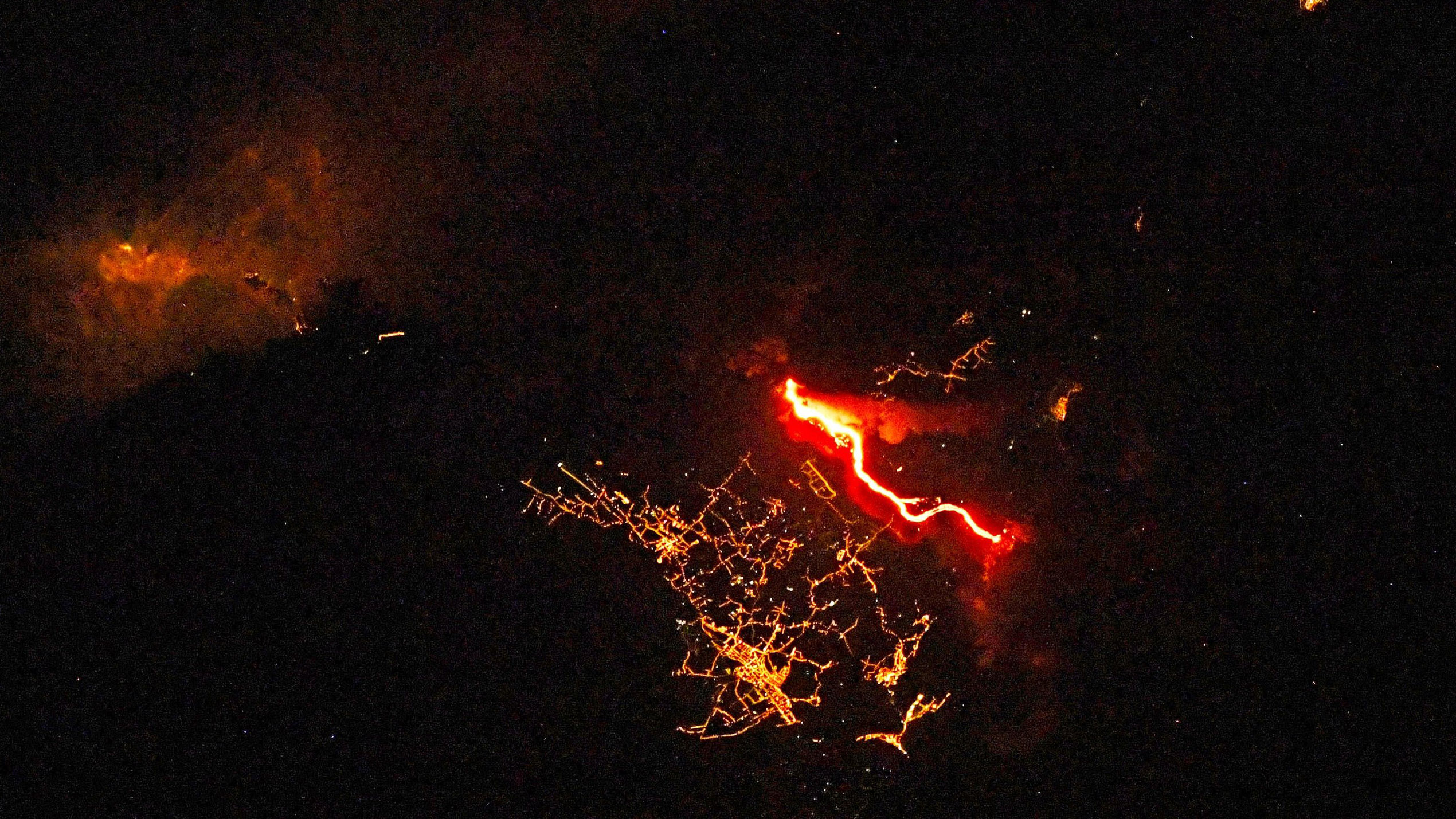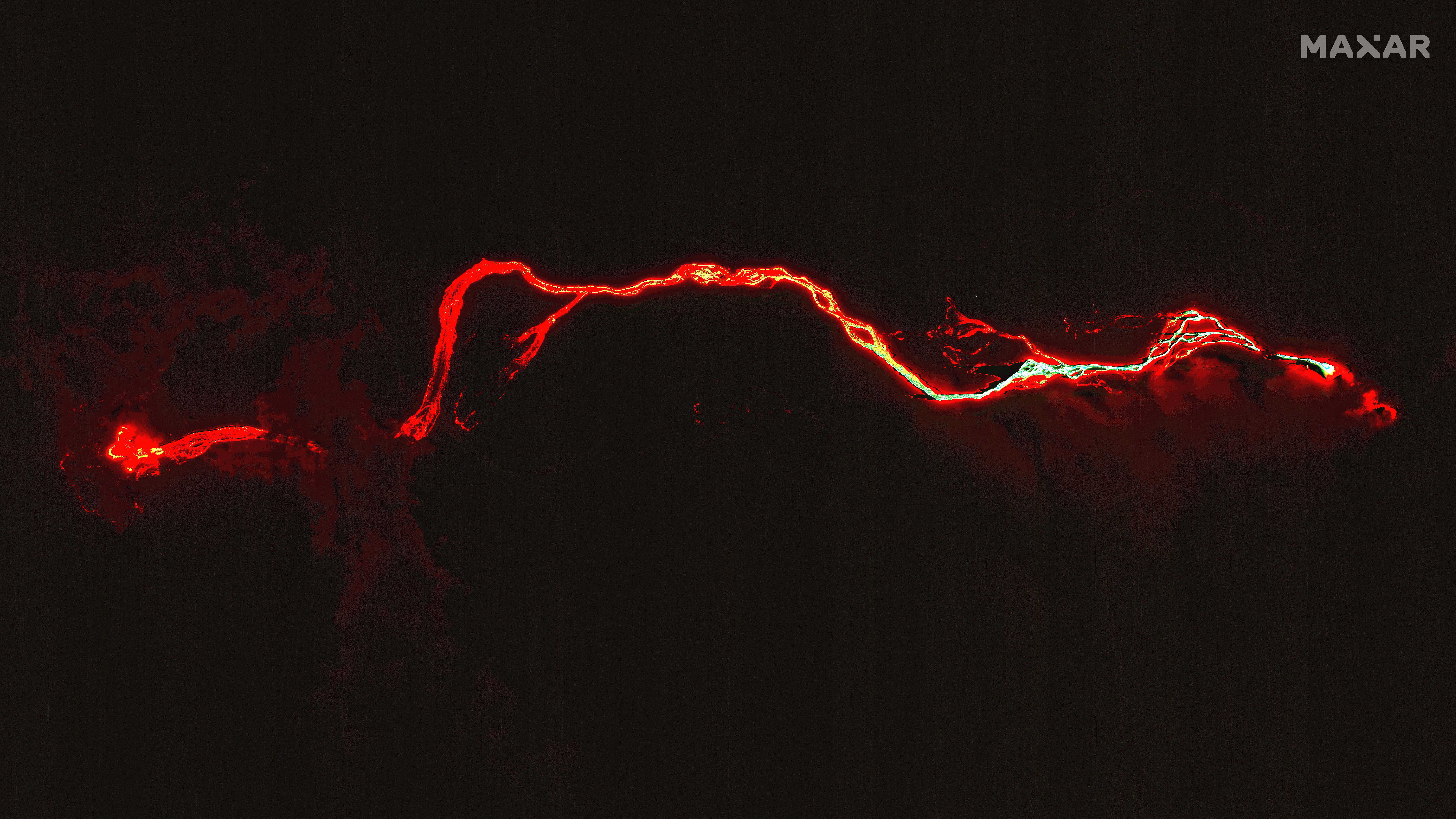Unstoppable lava from La Palma volcano eruption reaches ocean in stunning space photos
The volcanic eruption on Spain's La Palma island shows no signs of stopping.

New images from space of the La Palma volcano eruption in the Canary Islands show the unstoppable river of lava flowing into the Atlantic Ocean just as locals report new earthquakes in the region.
The burning lava scar on the western flanks of La Palma, one of the islands of the Spain-governed Canary archipelago off the coast of northwest Africa, glows brightly in nighttime images captured by U.S. Earth observation company Maxar Technologies on Thursday (Sept. 30). The images clearly reveal the area on the left where the lava flow spills into the Atlantic Ocean at the secluded Playa Nueva beach near the town of Tazacorte.
The Volcanic Institute of the Canaries (Involcan) reported the solidifying lava has created a new penninsula, that is already larger than 25 soccer pitches, The Guardian reported.
Related: Bright lava flows, smoke pour from La Palma volcano eruption in new Landsat photos



Russian cosmonauts Oleg Novitsky and Pyotr Dubrov on the International Space Station also photographed the eruption from orbit and shared the images on Twitter a day after capturing them on Wednesday (Sept. 29).
The image, shared by Novitsky on Thursday (Sept. 30), shows a glowing lava river considerably outshining the urban network of lights as the island and the surrounding ocean hide in darkness.
"Yesterday Pyotr Dubrov and I managed to capture the volcano's magma from the ISS at night," Novitsky said in the tweet.
Breaking space news, the latest updates on rocket launches, skywatching events and more!
The European Union's Copernicus Earth observation program also shared new images of the ongoing eruption today, saying that more than 1,000 buildings have been buried in the boiling stream of lava since the eruption started on Sept. 19.
Over 1.4 square miles (3.6 square kilometers) of land have been buried so far as the eruption shows no signs of stopping. A series of mild earthquakes up to the magnitude of 3.5 shook the island on Friday (Oct.1) and a new lava-spewing fissure opened about 1,310 feet (400 meters) north from the original crater of the Cumbre Vieja volcano, according to Sky News.
More than 6,000 people including hundreds of tourists have been evacuated since the eruption started and three coastal villages are currently locked down as geologists worry the boiling lava mixing with cool sea water might release toxic gases.
The eruption, the first for Cumbre Vieja since 1971, had been preceded by more than 20,000 mild Earth tremors in the week prior to the first fissure opening. Involcan predicts the eruption may continue for weeks or even months.
Follow Tereza Pultarova on Twitter @TerezaPultarova. Follow us on Twitter @Spacedotcom and on Facebook.

Tereza is a London-based science and technology journalist, aspiring fiction writer and amateur gymnast. Originally from Prague, the Czech Republic, she spent the first seven years of her career working as a reporter, script-writer and presenter for various TV programmes of the Czech Public Service Television. She later took a career break to pursue further education and added a Master's in Science from the International Space University, France, to her Bachelor's in Journalism and Master's in Cultural Anthropology from Prague's Charles University. She worked as a reporter at the Engineering and Technology magazine, freelanced for a range of publications including Live Science, Space.com, Professional Engineering, Via Satellite and Space News and served as a maternity cover science editor at the European Space Agency.
